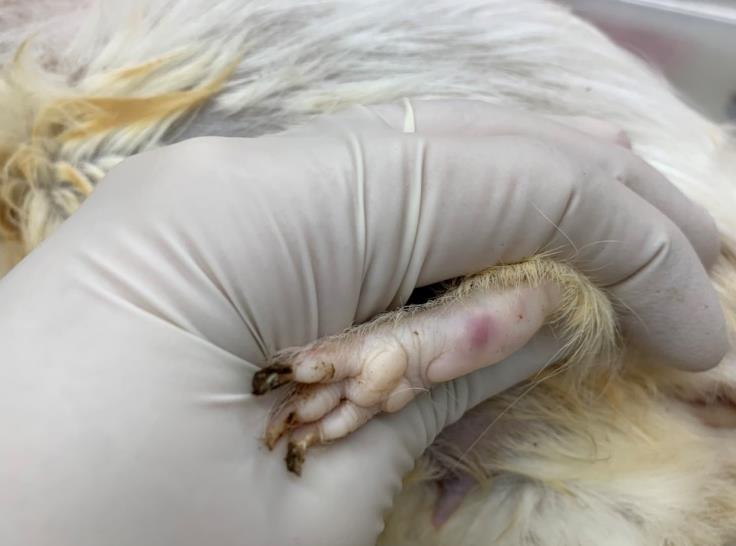Preliminary Study of the Effects of Weekly Cage Replacement on Guinea Pig Breeders’ Health: A Case Study of the National Laboratory Animal Center, Mahidol University, Thailand
Keywords:
Guinea pig, Mlac:DH, Cage replacement, Hematological parameters, Clinical chemistry parameter, National Laboratory Animal CenterAbstract
The aim of this study was to compare the effects of weekly cage changes (test group) and twice-weekly cage changes (control group) on the health of Mlac:DH guinea pig breeders and the total number of weaned animals throughout the course of the 15-month production cycle. The number of animals that died before weaning, the number of weaned animals throughout the production period, gross lesions from necropsies, histopathological changes, hematological parameters, and clinical chemistry values at 3, 6, 9, 12, and 15 months were recorded. The results showed that the two groups had no statistically significant differences in the number of animals that died before weaning and the number of weaned animals produced throughout the production period (P-values were 0.683 and 0.929). Necropsies and visible lesions were found to be minimally focal pododermatitis in all hind limbs in both the test and control groups after a rearing period of 9 months or longer. Ovarian cysts were found in both the test group and the control group after 12 months of rearing. Overview of histological results: mild pyogranulomatous was found in the lung in the test group: 1 animal at 6-months of rearing and 2 animals at a 9-month period. Mild inflammation and hepatic necrosis were observed in the control group (1 animal) at 6 months of rearing. These lung and hepatic abnormalities are presumed to be of individual incidence. The hematological and clinical chemistry values of the test and control groups at all rearing periods were consistent with those previously reported abroad, and in each parameter, the test group and the control group were not statistically different. However, since this study was a preliminary study, future research needs to gather data from the whole colony. Especially in terms of hematological and clinical chemistry, sex and age of the animal are associated.
References
Nation Research Council. Guide for the Care and Use of Laboratory Animals. 8th ed. Washington DC, USA: The National Academic Press; 2011.
Burn CC, Peters A, Day MJ, Mason GJ. Long-term effects of cage-cleaning frequency and bedding type on laboratory rat health, welfare, and handleability: A cross-laboratory study. Laboratory Animals 2006;40(4):353-70.
Rosenbaum MD, VandeWoude S, Johnson TE. Effects of cage-change frequency and bedding volume on mice and their microenvironment. Journal of the American Association for Laboratory Animal Science 2009;48(6):763-73.
IBM Corp. IBM SPSS Statistics for Windows, Version 27.0. Armonk, NY: IBM Corp; 2020.
Sanderson AE, Multari HM, Lohmiller JJ, Boutin SR. Effect of cage-change frequency on rodent breeding performance. Lab Animal 2010;39(6): 177-82.
Brown C, Donnelly TM. Treatment of pododermatitis in the guinea pig. Lab Animal 2008;37(4):156-7.
Keller LS, Griffith JW, Lang CM. Reproductive failure associated with cystic rete ovarii in guinea pigs. Veterinary Pathology 1987;24(4):335-9.
Stephen MG, Dean HP. Guinea pig. In: Stephen WB, editor. Pathology of Laboratory Rodents and Rabbits, 4th edition: John Wiley and Sons; 2016. p. 213-52.
Popoiu S, Teodoru A-M, Levandovschi N, Coman C. Hematological and biochemical dynamics of rabbits and guinea pigs used for scientific purposes at Cantacuzino institute, Bucharest. The Romanian Review of Veterinary Medicine 2021;31(2):69-80.
Spittler AP, Afzali MF, Bork SB, Burton LH, Radakovich LB, Seebart CA, Moore AR, Santangelo KS. Age-and sex-associated difference in hematology and biochemistry parameters of Dunkin Hartley guinea pigs (Cavia porcellus). PLoS One 2021;16(7):e0253794.
Fitria L, Lestari S, Istiqomah AN, Wulandari NP, Wardani AS, Hematology profile of guinea pigs [Cavia porcellus (Linnaeus, 1758)] based on sex and age. Proceedings of the 7th International Conference on Biological Science (ICBS 2021); 2021 Oct 14-15; Yogyakarta: Indonesia; 2021.

Downloads
Published
Issue
Section
License
บทความทุกบทความที่ตีพิมพ์ในวารสารการพัฒนางานประจำสู่งานวิจัย (JPR2R) ถือว่าเป็นลิขสิทธิ์ของวารสารการพัฒนางานประจำสู่งานวิจัย คณะสิ่งแวดล้อมและทรัพยากรศาสตร์ มหาวิทยาลัยมหิดล





